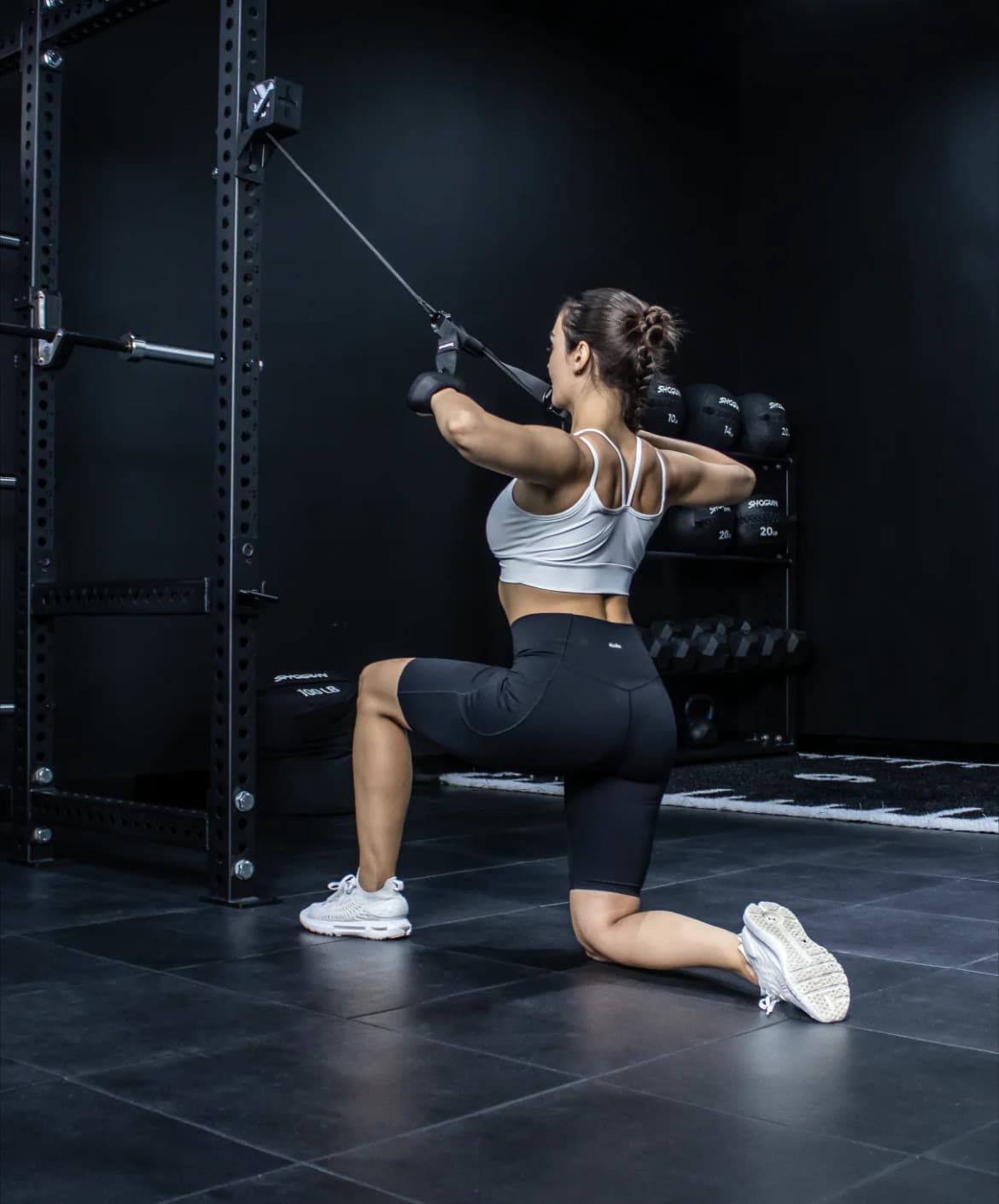Benefits, Tips, and Best Practices
In recent years, the weighted vest has emerged as a popular tool for fitness enthusiasts, athletes, and even those rehabilitating from injuries. Whether you’re walking, running, or simply looking for ways to enhance everyday activities, incorporating a weighted vest into your routine can help take your fitness to the next level.
But how do you use a weighted vest effectively? How heavy should a weighted vest be for walking? And what does walking with a weighted vest do? In this comprehensive guide, we’ll answer all your questions and provide in-depth information about everything you need to know about weighted vests, from how to choose the right size to the science behind their benefits.
What is a Weighted Vest?
A weighted vest is a fitness accessory that fits over your torso and allows for weight to be added to your body, creating extra resistance during physical activities.
Most vests are designed with pockets or slots that hold small, removable weights, usually in increments of 1 to 5 pounds. Some weighted vests come with fixed weights and are intended for specific exercises or activities. These vests can vary in weight, ranging from 5 to 100 pounds or more.
Why Use a Weighted Vest?
Adding weight to your body can increase the intensity of your workouts without requiring complicated equipment or movements. By simply wearing a vest during daily activities such as walking, running, or even climbing stairs, you increase the workload on your muscles, bones, and cardiovascular system.

This leads to greater calorie burn, improved muscular endurance, and increased bone density over time. In short, what does a weighted vest do? It amplifies the effects of gravity on your body, making your muscles work harder.
How Heavy Should My Weighted Vest Be?
The amount of weight you choose to add to your vest depends on several factors, including your current fitness level, the type of activity you’re doing, and your specific goals.
A common question is, how heavy should a weighted vest be?
As a general rule, beginners should start with a vest that weighs 5-10% of their body weight. For example, if you weigh 150 pounds, your vest should weigh between 7.5 and 15 pounds to start. This weight provides enough resistance to challenge your body without risking injury.
Choosing the Right Weight for Walking
Walking is one of the most accessible forms of exercise, and using a weighted vest while walking can boost the intensity without requiring extra time or effort.
How heavy should a weighted vest be for walking?
For most individuals, starting with a vest weighing between 10 and 20 pounds is appropriate. This weight range is enough to provide a significant challenge while still allowing for proper posture and natural movement. However, if you’re new to walking with weights, it’s wise to start on the lower end and increase the weight gradually as your body adjusts.
For more information read our Ultimate Guide for Weighted Vest
The Benefits of Walking with a Weighted Vest
So, what does walking with a weighted vest do? First and foremost, it increases the number of calories you burn during your walk. The extra weight forces your body to work harder to move, which in turn requires more energy.
Additionally, walking with a weighted vest strengthens your muscles, particularly in your lower body, core, and back. Over time, this can lead to improved posture, balance, and overall strength. Furthermore, the added resistance can help enhance bone density, which is particularly beneficial for individuals at risk of osteoporosis.
Running with a Weighted Vest: How Heavy Should It Be?

Running with a weighted vest can take your cardio routine to the next level. However, because running is a high-impact activity, it’s essential to be cautious when adding extra weight.
How heavy should a weighted vest be for running?
The general recommendation is to start with a vest that is 5-10% of your body weight, similar to walking. However, because running is more strenuous, you may want to begin with a lighter weight until your body adapts to the added load.
Read our review of the best weighted vest on the market!
What Does Running with a Weighted Vest Do?
What does running with a weighted vest do for your body? The additional weight increases the demand on your muscles and cardiovascular system, resulting in improved endurance, strength, and stamina. It also activates stabilizing muscles that aren’t as engaged during normal runs, leading to better balance and injury prevention.
However, it’s crucial to start slowly when running with a vest to avoid placing excessive strain on your joints, particularly your knees and ankles.
How to Start Using a Weighted Vest for Walking and Running
When incorporating a weighted vest into your walking or running routine, it’s essential to approach it gradually. Start by wearing the vest for short distances or periods, such as a 10-15 minute walk or half-mile run. Pay close attention to your form and how your body feels.
If you experience discomfort or strain, reduce the weight or take a break. Over time, you can increase both the weight and the duration of your sessions as your body adapts to the added resistance.
The Importance of Proper Fit
What size weighted vest should I get? A well-fitting vest is key to maximizing the benefits and minimizing the risks of wearing a weighted vest. The vest should fit snugly against your body without restricting your movement or causing discomfort.
Adjustable vests are an excellent option because they allow you to customize the fit and gradually increase the weight as you progress. Additionally, look for a vest with padding or soft lining to prevent chafing during extended use.
What Weight Weighted Vest Should I Get for Different Activities?
Choosing the right vest weight depends on the specific activity you plan to do. For walking, a lighter vest in the range of 10-20 pounds is typically sufficient for most people. For running, start even lighter, between 5-10% of your body weight, to avoid placing too much stress on your joints.
If you’re doing strength training or bodyweight exercises like push-ups, squats, or pull-ups, you can go heavier—up to 20-30% of your body weight, depending on your fitness level.
Using a Weighted Vest for Strength Training
In addition to walking and running, weighted vests can be used to enhance strength training exercises. Bodyweight exercises like squats, lunges, and push-ups become significantly more challenging when done while wearing a weighted vest. This added resistance forces your muscles to work harder, leading to greater strength gains over time.
When using a weighted vest for strength training, start with a weight that allows you to maintain proper form throughout your exercises. Gradually increase the weight as you become stronger.
For more information read our Ultimate Guide for Weighted Vest
How to Incorporate a Weighted Vest into Your Workout Routine
Incorporating a weighted vest into your workout routine doesn’t have to be complicated. You can wear it during a variety of activities, including:
• Walking or running
• Climbing stairs
• Hiking
• Bodyweight exercises (push-ups, squats, lunges)
• High-intensity interval training (HIIT)
The key is to start slowly and increase the intensity as your body adapts to the added resistance.
Building Endurance with a Weighted Vest

One of the primary benefits of wearing a weighted vest is the boost it provides to your endurance. By adding weight to your body during aerobic activities like walking or running, you force your heart and lungs to work harder, improving your cardiovascular fitness over time.
As your endurance improves, you’ll be able to perform longer, more intense workouts without feeling as fatigued.
Strengthening Muscles with a Weighted Vest
A weighted vest isn’t just for cardio—it’s also an excellent tool for building strength. When you wear a vest during activities like walking or running, your leg muscles, particularly the quads, hamstrings, and glutes, have to work harder to propel you forward.
Additionally, your core muscles are engaged to maintain balance and posture, which helps build strength in the abdomen and lower back. Over time, this can lead to increased muscle definition and tone.
Improving Bone Density with a Weighted Vest
One of the lesser-known benefits of wearing a weighted vest is its potential to improve bone density. This is particularly important for individuals at risk of osteoporosis, a condition that causes bones to become weak and brittle.
How long to wear a weighted vest for osteoporosis?
Start with short periods of 15-30 minutes of walking or light activity while wearing the vest. Gradually increase the time and weight as your body adapts. The added resistance from the vest stimulates bone growth, helping to strengthen bones and reduce the risk of fractures.
Cardiovascular Benefits of Weighted Vest Training

Wearing a weighted vest can significantly improve your cardiovascular health. The extra weight makes your heart work harder to pump blood to your muscles, which over time strengthens the heart and improves circulation. This can lead to lower resting heart rates, improved cholesterol levels, and better overall heart health.
For those looking to boost their cardiovascular fitness without adding more time to their workouts, wearing a weighted vest is an efficient solution.
Enhancing Balance and Coordination with a Weighted Vest
In addition to improving strength and endurance, wearing a weighted vest can help enhance your balance and coordination. When you add weight to your body, your stabilizing muscles—those that control your posture and alignment—have to work harder to keep you steady.
This is especially true during dynamic movements like running or hiking on uneven terrain. Over time, this leads to improved balance and coordination, which can be beneficial for both athletic performance and everyday activities.
What to Look for in a Weighted Vest
When shopping for a weighted vest, there are several factors to consider. Where to buy a weighted vest? Weighted vests are available at sporting goods stores, fitness equipment retailers, and online. Here are a few key features to look for:
• Adjustability: Choose a vest that allows you to add or remove weight easily. This flexibility is important as it lets you increase the weight as you progress.
• Fit: The vest should fit snugly without restricting your range of motion. Look for adjustable straps or closures to ensure a proper fit.
• Breathability: A vest made of breathable, moisture-wicking material will keep you comfortable during workouts.
• Durability: Choose a vest made of high-quality materials that can withstand frequent use.
How to Use a Weighted Vest Safely

Safety is paramount when using a weighted vest, especially if you’re new to the practice. Here are a few tips to keep in mind:
• Start light: It’s important to start with a lighter weight, even if you feel strong. This allows your body to adapt to the added resistance without risking injury.
• Focus on form: Whether you’re walking, running, or doing strength exercises, maintaining proper form is crucial when wearing a weighted vest. Improper form can lead to strain or injury.
• Gradually increase weight: As your strength and endurance improve, you can slowly add more weight to your vest. Avoid adding too much weight too quickly, as this can place excessive strain on your muscles and joints.
• Listen to your body: If you experience pain or discomfort while wearing the vest, stop and reassess. It may be a sign that you need to reduce the weight or adjust the fit.
The Science Behind Weighted Vest Training

The concept of adding resistance to the body during exercise is grounded in science. Studies have shown that wearing a weighted vest can significantly increase the intensity of physical activities, leading to greater calorie expenditure, improved muscle strength, and enhanced cardiovascular health.
Additionally, research suggests that wearing a vest during weight-bearing activities can stimulate bone growth, making it a valuable tool for those at risk of osteoporosis.
How Long Should You Wear a Weighted Vest?
There’s no one-size-fits-all answer to the question of how long you should wear a weighted vest. It depends on the activity you’re doing and your fitness level.
For walking, start with short periods of 15-30 minutes and gradually increase as your endurance improves.
For strength training, you can wear the vest for the duration of your workout, as long as you’re able to maintain proper form.
For cardiovascular exercises like running, begin with short intervals and increase the time as your body adapts to the added resistance.
The Benefits of Wearing a Weighted Vest During Everyday Activities
You don’t have to limit your vest use to formal exercise sessions. Wearing a weighted vest during everyday activities like household chores, gardening, or even walking around your neighborhood can provide additional benefits. The added weight forces your muscles to work harder, leading to increased calorie burn and strength over time.
This can be especially helpful for individuals who may not have time for lengthy workout sessions but still want to stay active and fit.
Incorporating a Weighted Vest into High-Intensity Interval Training (HIIT)

High-intensity interval training (HIIT) is a popular workout method that alternates between short bursts of intense activity and periods of rest. Adding a weighted vest to your HIIT workouts can increase the intensity and provide an even greater challenge to your muscles and cardiovascular system. Exercises like burpees, jumping jacks, and sprints become significantly more difficult with the added resistance, leading to faster strength and endurance gains.
How to Progress with a Weighted Vest
As with any fitness tool, progression is key to maximizing the benefits of using a weighted vest. Start with a light weight and gradually increase the load as your body adapts.
For walking, increase the weight by 2-5 pounds every few weeks.
For strength training, add weight when you can complete all of your reps with proper form. For running, increase the weight by small increments and pay attention to how your body responds.
Weighted Vests and Fat Loss

One of the primary reasons many people turn to weighted vests is for fat loss. The added weight increases the number of calories you burn during exercise, which can lead to fat loss over time. Additionally, building muscle through resistance training helps boost your metabolism, allowing you to burn more calories even at rest. If fat loss is your goal, combining a weighted vest with a healthy diet and regular exercise can help you reach your goals faster.
Improving Athletic Performance with a Weighted Vest
Many athletes use weighted vests to improve their performance in their respective sports. Whether you’re a runner, basketball player, or swimmer, wearing a weighted vest during training can help improve your strength, endurance, and speed. The added resistance forces your muscles to work harder, which translates to improved performance when the vest is removed.
Additionally, the increased cardiovascular demand helps enhance stamina, allowing you to perform at a higher level for longer periods.
How to Make a Weighted Vest at Home
If you’re on a budget or prefer a DIY approach, you can make a weighted vest at home using household items. Start with a sturdy, well-fitting vest and sew or attach small pockets to the interior. Fill these pockets with sandbags, metal weights, or even small bags of rice. Ensure that the weight is evenly distributed across the vest to maintain balance and comfort. While a DIY vest may not be as durable or adjustable as a store-bought version, it can provide a low-cost alternative for those just starting.
The Psychological Benefits of Using a Weighted Vest
In addition to the physical benefits, using a weighted vest can have a positive impact on your mental health. The added weight forces you to focus on your movements and maintain proper form, which can help improve mindfulness and reduce stress.
Additionally, the sense of accomplishment that comes from progressing with a weighted vest—whether it’s adding more weight or increasing your workout duration—can boost confidence and motivation.
Using a Weighted Vest for Rehabilitation
Weighted vests aren’t just for athletes or fitness enthusiasts—they can also be a valuable tool for individuals recovering from injuries. For example, wearing a vest during physical therapy sessions can help strengthen weakened muscles and improve balance without requiring additional equipment.
However, it’s essential to work with a healthcare provider to ensure that you’re using the vest safely and appropriately.
Weighted Vests for Children and Adolescents
While most people associate weighted vests with adult fitness, they can also be used to support children and adolescents in certain situations. Some children with sensory processing disorders or autism may benefit from wearing a weighted vest to help with self-regulation and focus. However, it’s crucial to consult with a healthcare provider or occupational therapist before using a weighted vest with children to ensure it’s appropriate for their specific needs.
Weighted Vests and Core Strength
Wearing a weighted vest can help strengthen your core muscles, which are essential for maintaining balance, stability, and posture. When you wear a vest, your core muscles—particularly the abdominals and lower back—are engaged to keep you upright and balanced. This is especially true during dynamic movements like walking, running, or jumping. Over time, this leads to improved core strength, which can enhance both athletic performance and everyday activities like lifting and carrying objects.
Using a Weighted Vest for Posture Improvement

Poor posture is a common issue for many people, especially those who spend long hours sitting at a desk or using electronic devices. Wearing a weighted vest can help improve your posture by engaging the muscles in your back, shoulders, and core. The added weight encourages you to stand tall and maintain proper alignment, which can reduce strain on your neck and lower back. Over time, this can lead to improved posture and reduced discomfort from sitting or standing for long periods.
How to Maintain Your Weighted Vest
Taking care of your weighted vest is essential to ensure it lasts and continues to function properly. Most weighted vests are made of durable materials like nylon or polyester, but they still require regular maintenance. Here are a few tips for keeping your vest in good condition:
• Clean it regularly: After each use, wipe down your vest with a damp cloth to remove sweat and dirt. If it’s machine washable, follow the manufacturer’s instructions for cleaning.
• Check for wear and tear: Inspect your vest regularly for signs of damage, such as loose stitching or tears in the fabric. Repair any damage promptly to prevent it from getting worse.
• Store it properly: Store your vest in a cool, dry place to prevent mold or mildew from forming.
The Future of Weighted Vests

As technology advances, we’re likely to see new innovations in the design and function of weighted vests. For example, some companies are already developing vests with integrated sensors that track your heart rate, movement, and calorie expenditure in real time. These smart vests can provide valuable feedback during workouts, helping users optimize their training for maximum results. Additionally, future vests may incorporate materials that adjust the amount of weight based on your activity level, making them even more versatile.
How to Get Started with a Weighted Vest Today
Ready to give a weighted vest a try? Here’s how to get started:
1. Choose the right vest: Look for a vest that fits snugly, is adjustable, and allows you to add or remove weight as needed.
2. Start light: Begin with a weight that’s 5-10% of your body weight, or even lighter if you’re new to weighted vests.
3. Focus on form: Whether you’re walking, running, or doing strength exercises, prioritize proper form to avoid injury.
4. Increase gradually: As your strength and endurance improve, slowly add more weight to your vest.
5. Be consistent: Like any fitness tool, the key to seeing results with a weighted vest is consistency. Aim to use your vest regularly in your workouts or daily activities.
Conclusion: The Power of a Weighted Vest in Your Fitness Journey
A weighted vest is a simple yet powerful tool that can enhance virtually any aspect of your fitness routine, from walking and running to strength training and everyday activities. By adding resistance to your movements, you can improve your strength, endurance, cardiovascular health, and even bone density. Whether you’re just starting your fitness journey or looking for a new way to challenge your body, a weighted vest can help you reach your goals faster. (1,2)
So, what weighted vest should I start with? The answer depends on your fitness level, goals, and preferred activities. But no matter where you start, the key is to progress gradually, listen to your body, and enjoy the many benefits that come with wearing a weighted vest. Whether you’re walking for bone health, running for endurance, or lifting for strength, a weighted vest can be a game-changer in your fitness journey.


























